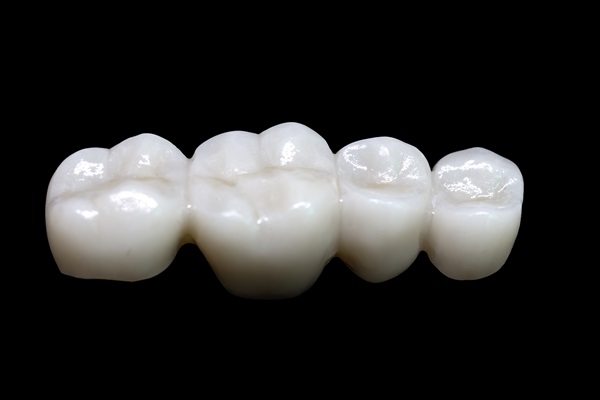How a Dental Bridge Can Restore Your Smile

A dental bridge is a reliable, effective solution for tooth loss, as it offers functional and aesthetic benefits. This dental restoration helps improve chewing, speech, and overall oral health while maintaining the smile’s natural structure. Patients interested in bridges as tooth replacements can benefit from learning more about their basics, placement process, and long-term care and maintenance.
The basics of dental bridges
A general dentist may recommend a dental bridge if one tooth or several teeth in a row must be replaced. This dental restoration bridges the gap created by tooth loss, anchoring the replacement tooth (pontic) to the surrounding natural teeth or dental implants. There are several types of bridges:
- Traditionaldental bridges. This type of bridge is anchored by two dental crowns cemented onto adjacent teeth on either side of the gap.
- Cantilever bridges. This bridge type relies on only one crown cemented on one adjacent natural tooth.
- Maryland bridges. Also known as a resin-bonded bridge, this type uses a metal or porcelain framework attached to the back of adjacent teeth.
- Implant-supported bridges. These bridges rely on crowns cemented to dental implants (rather than natural teeth) for support.
A dentist can assess the mouth and recommend a bridge type tailored to the patient’s specific needs. They will work to find a tooth replacement that restores the smile effectively and efficiently.
Key benefits of dental bridges
Dental bridges are a popular choice for tooth replacement due to their many benefits. The most significant benefit of dental bridges is restoring smile function. Missing teeth can make chewing difficult and uneven, potentially leading to digestive issues or additional wear on the remaining teeth. A bridge restores the ability to chew properly and evenly.
Bridges also play an essential role in maintaining oral health. Adjacent teeth are likely to shift into the empty space left by a missing tooth, which causes alignment issues and bite problems. A bridge prevents this shifting by preserving the natural structure of the dental arch. It can also restore natural speech patterns, as missing teeth often cause pronunciation challenges.
Another major benefit of bridges is that they restore the smile's appearance. Missing teeth leave gaps in the smile, which can impact self-confidence. Fortunately, bridges blend seamlessly with natural teeth, enhancing the overall look of a smile.
The dental bridge placement process
Typically, the process of receiving a dental bridge involves multiple steps to ensure a precise fit and long-lasting results. It begins with an initial consultation, during which the general dentist examines the teeth and gums and discusses treatment options. Imaging, such as X-rays or digital scans, can give a clearer picture of the oral structure and help determine the best approach.
In cases where a traditional or cantilever bridge is necessary, the dentist must prepare the adjacent teeth to support the dental crowns. The dentist will reshape the teeth to accommodate the bridge. They will then take impressions or digital scans to create a custom bridge that matches the size, shape, and color of the natural teeth.
A dentist may place a temporary bridge while the permanent restoration is being fabricated in an off-site dental lab. Once the custom bridge is ready, the patient can return to the dental office. Patients will have a chance to look at the bridge before the dentist permanently bonds it in place.
The process behind implant-supported bridges
The process is slightly different for implant-supported bridges. The patient will need to undergo oral surgery to have the implants placed. They will then need to wait several months for the implants to fuse with the jawbone. Once this occurs, the general dentist can place the bridge.
Caring for a dental bridge: Tips for longevity
Proper care is essential to ensure the durability and effectiveness of a dental bridge. Daily oral hygiene practices, such as brushing and flossing, help keep the teeth and bridge clean. Special flossing tools, such as floss threaders, can be used to clean underneath the bridge effectively.
Routine dental checkups allow a general dentist to monitor the bridge and ensure it remains secure and functional. During these checkups, a dental hygienist will also remove plaque and tartar buildup that may accumulate around the bridge and adjacent teeth. This helps promote long-term oral health and longevity of the bridge.
Restore your smile with a dental bridge
Dental bridges effectively restore the smile to its former beauty and functionality. If you have lost a tooth or several teeth, reach out to our team at Ohio Cosmetic Dentists to learn more about bridges. A general dentist can determine candidacy during an appointment.
Request an appointment here: https://www.ohiocosmeticdentists.com or call Ohio Cosmetic Dentists at (614) 503-5240 for an appointment in our Columbus office.
Check out what others are saying about our dental services on Yelp: Dental Bridges in Columbus, OH.
Recent Posts
A missing permanent tooth should be replaced as soon as possible to prevent serious oral health issues. Dental bridges are one of the most commonly used treatments to replace a severely damaged or missing tooth. Many patients prefer this option because it is minimally invasive and requires only one or two trips to the dentist's…
A dental bridge is one of the tooth replacement options a dentist might recommend to restore missing teeth and a patient’s smile. Regardless of the cause of tooth loss—injury, tooth decay or an oral health condition—tooth loss can make eating inconvenient and might even affect a patient's confidence. Once in place, a dental bridge will…
Many times, dental crowns are used to repair weakened or damaged teeth, especially those impacted by severe decay. However, this type of treatment also has a place in cosmetic dentistry. It can often be used to improve the overall look of a patient's smile.While at first glance they can seem like little more than a…
Dental crowns can restore your natural smile and dental function. Many individuals suffer from low self-esteem due to their teeth condition, but this improves when they get dental crowns. However, these crowns are not inexpensive, and you must keep them in good shape to ensure that they last a long time. Dental crowns will last…


